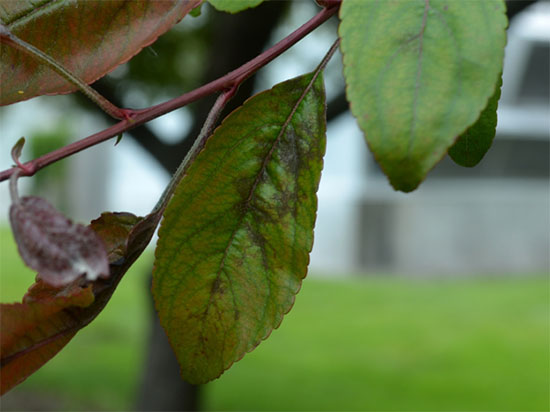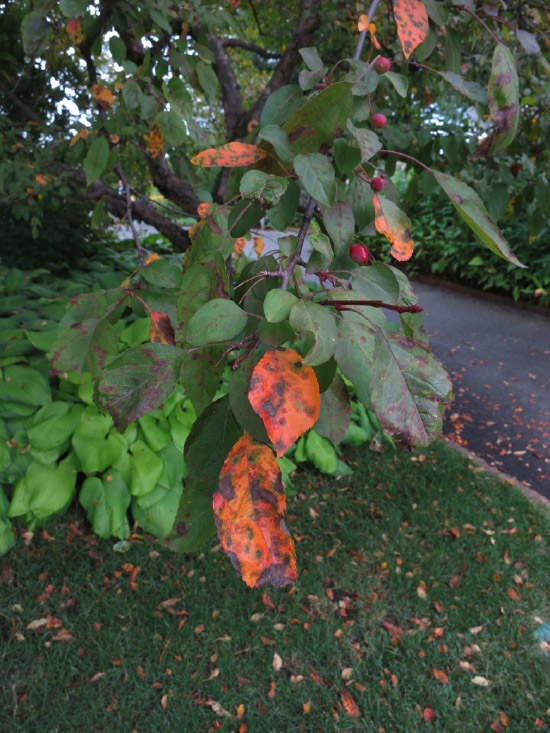Issue 16, September 25, 2017
Apple Scab Prevention for 2018
Has apple scab been a problem on your crabapples this year? At this point in the season, many apples and crabapples have lost most of their leaves and appear quite bare are a result of this disease. Apple Scab is an extremely common fungal disease of apple and crabapple caused by the pathogen Venturia inaequalis. Symptoms first appear as olive green spots on the foliage. The spots often form along or near the leaf veins, eventually developing a dark, velvety appearance. Infected leaves also may appear curled or puckered. By mid-summer, infected leaves turn yellow, and prematurely drop from the tree. Apple scab will not kill a tree, but it has the ability to make a tree appear rather unsightly. Additionally, repeated defoliation may weaken a tree resulting in reducing growth, flowering, and increased susceptibility to other stresses. Fortunately, you have a variety of options to help reduce damage from apple scab for the 2018 growing season.

Early symptoms of crabapple scab on Prairifire Crabapple.
Start by removing leaf litter around your diseased trees. Fallen diseased leaves harbor the overwintering scab fungus that will infect next year's leaves. Dispose of leaves by raking and burning. In areas where raking is not practical, use a mulching mower help to the speed decomposition of fallen leaves. Fall turf fertilization practices will further help with the decomposition process.
Prune your trees to promote good air movement through the canopy. Foliage on a properly pruned tree should dry more quickly, reducing the likelihood of infection. Proper pruning will also make it easier to obtain good coverage of canopy when applying fungicides.

Scab infected crabapple leaves changing to a yellow-orange color before falling from the tree.
Fungicide sprays effectively protect developing leaves on susceptible cultivars. Be ready to apply the first application early in the spring, when leaves just begin to emerge from buds (about 1/4 inch green). Repeat application will be necessary to maintain protection. Re-apply according to label intervals until 2 weeks after petal fall. If the tree is free of leaf spots at that point, further treatments are unnecessary.
Intervals between sprays depend on several factors. The product's label provides a range of days between sprays. Follow the shortest labeled spray interval during periods of frequent wet weather and in plantings that had severe scab infections the previous growing season. A longer interval is acceptable during dry weather and in plantings where scab has been less of a problem. (Travis Cleveland)
Author:
Travis Cleveland